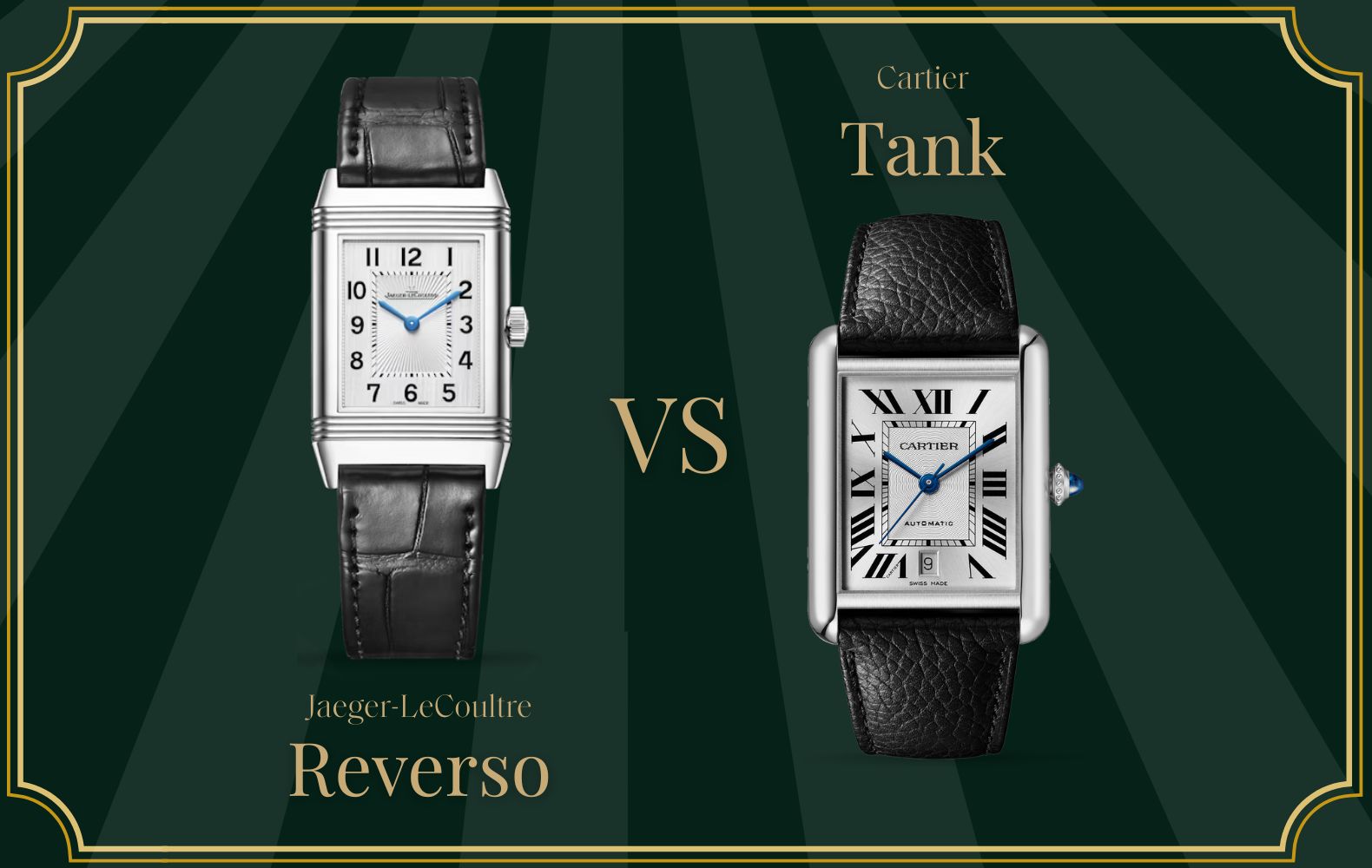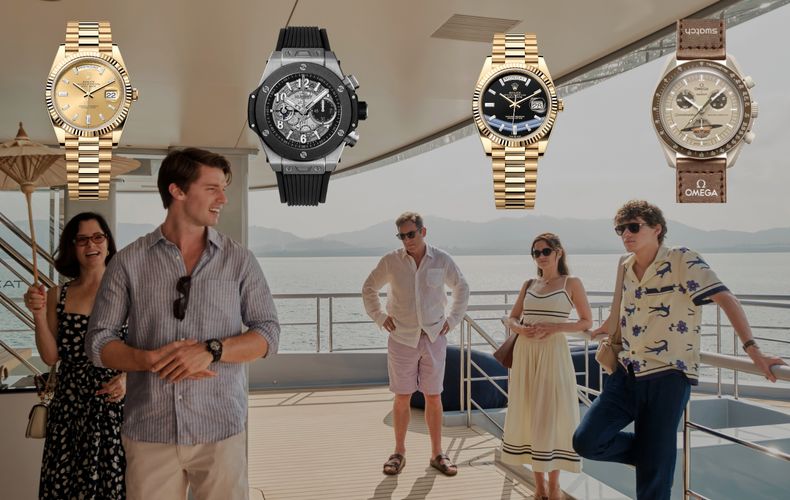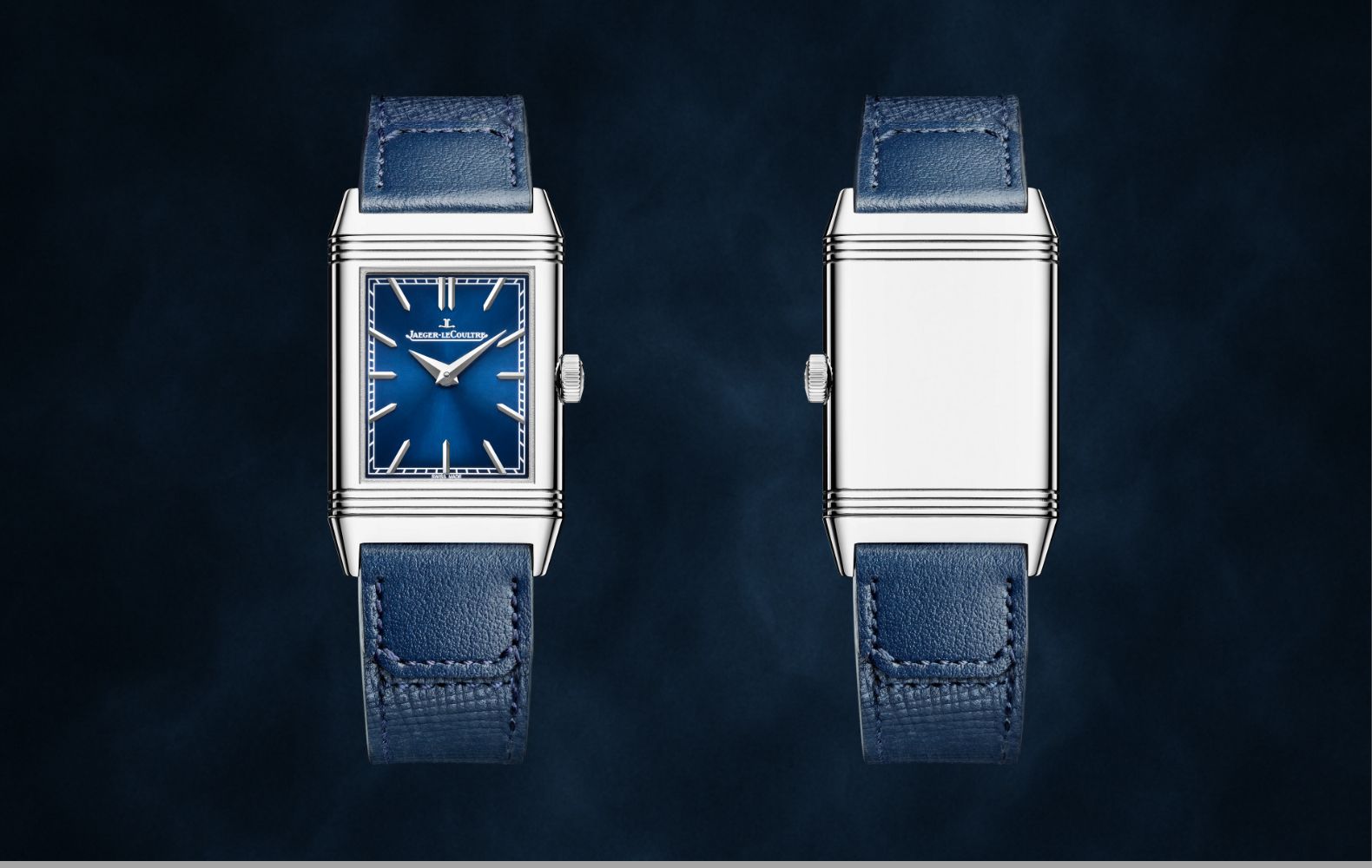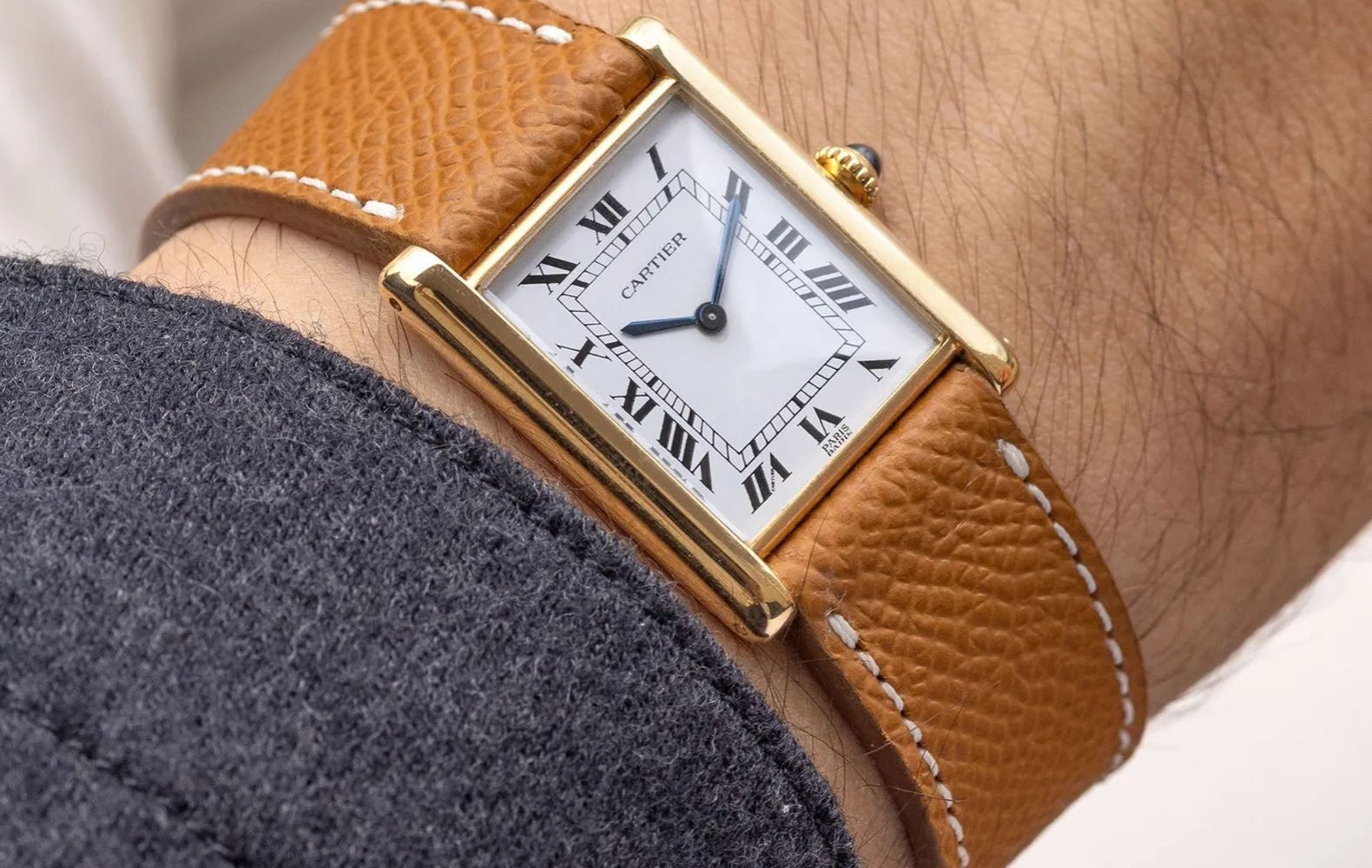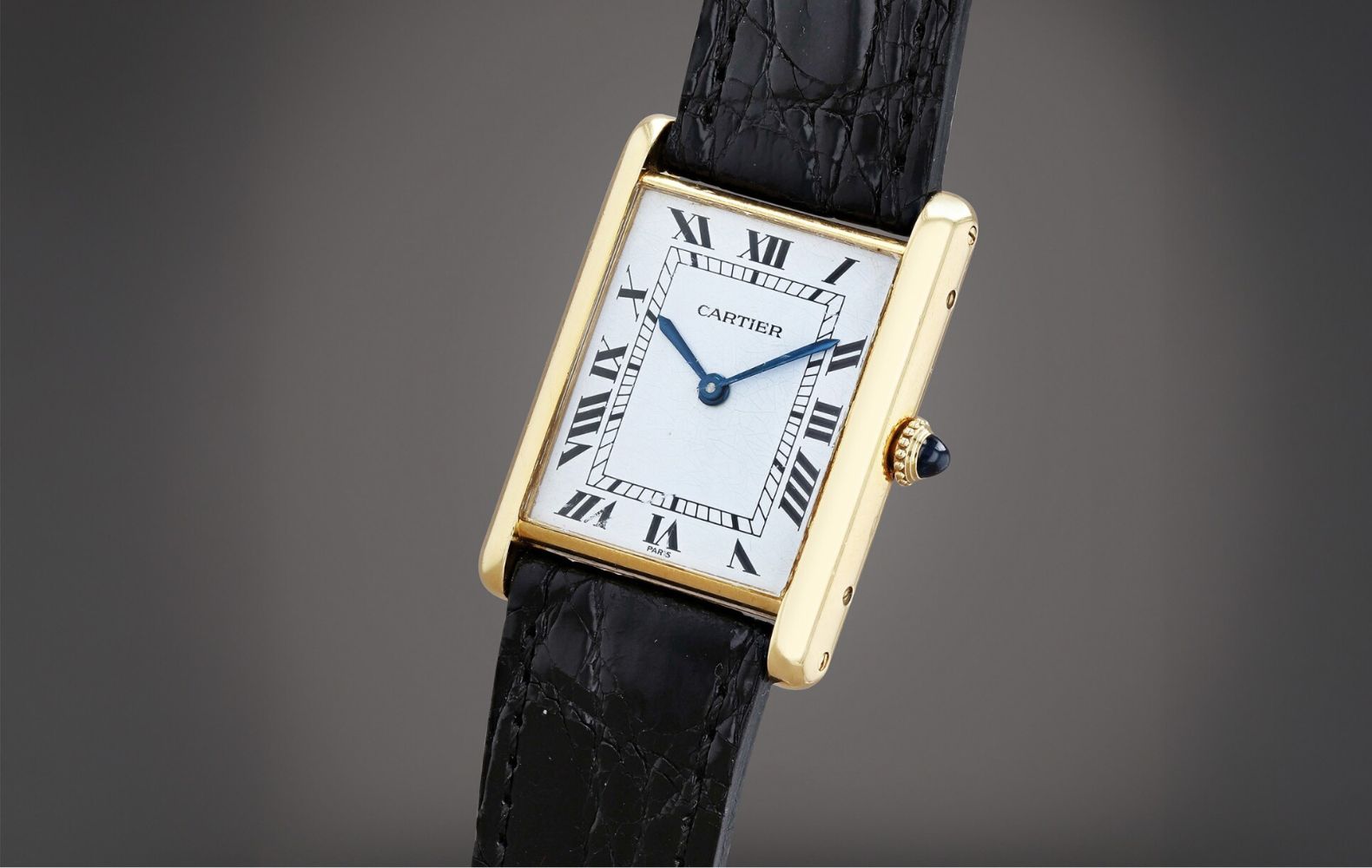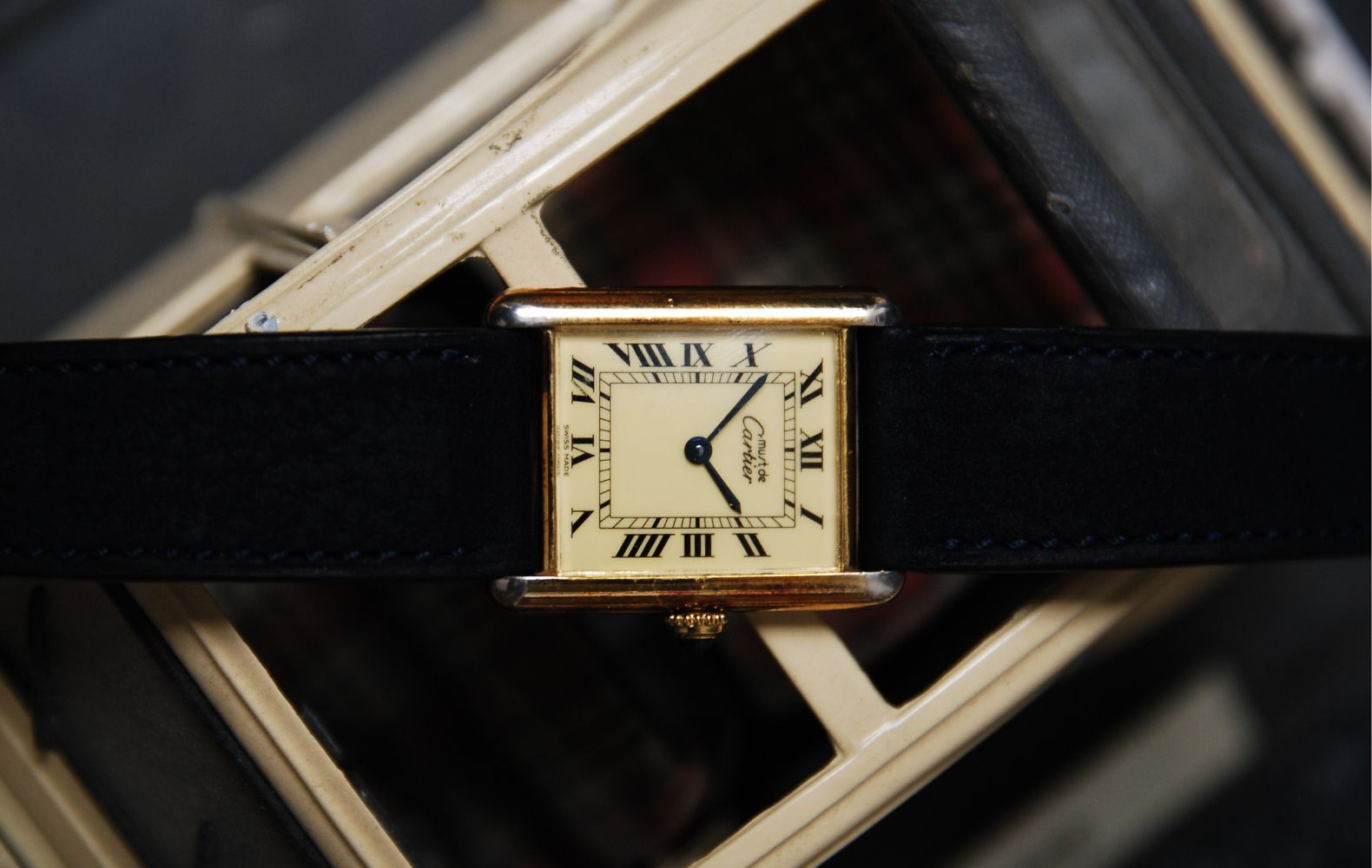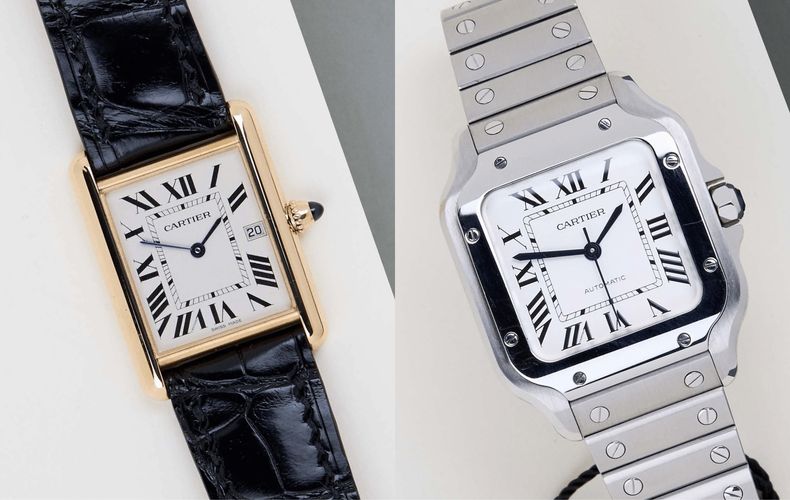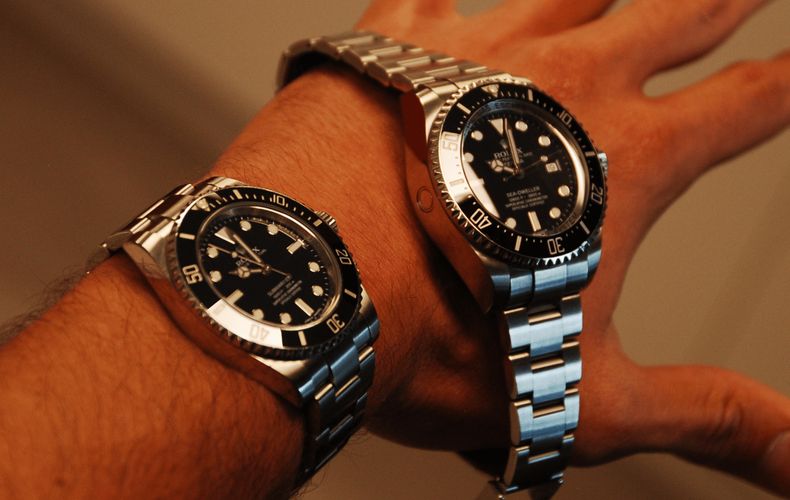The Tank is effortless. It’s what Jackie Kennedy wore to the White House. What Andy Warhol wore with intention, but never bothered to set the time. It hasn’t changed much since 1917, and that’s the point. It didn’t just ride the wave of wristwatches. It defined the category. The Reverso? Built for polo players in 1931. It flips its case to protect the dial. It’s not just clever, it’s classic. And over the decades, it’s gone from sporty tool to art deco icon. If the Tank is style, the Reverso is substance with flair.

Jaeger-LeCoultre Reverso vs Cartier Tank: Same Shape, Different Worlds
Two rectangular icons. One decision to make. The Cartier Tank and the Jaeger-LeCoultre Reverso are both legends. Both worn by icons. Both unisex. But aside from their shape, they don’t have much in common. One is rooted in Parisian elegance. The other is Swiss engineering. One’s design-first. The other’s function turned into form.
Style: Design First or Function First?
Sure, both are rectangular. That’s where the similarities end. The Tank is stripped back. Roman numerals. Sword hands. That instantly recognizable brancard case. Inspired by WWI tanks from above, but worn like a silk scarf. It’s as timeless as it gets, and one of the easiest watches to pull off with anything. The Reverso takes a different approach. Its case isn’t just a case, it’s a mechanism. Flip it over and protect the dial, or show off a second face. Some models even have custom engravings or art on the back. The look is unmistakably JLC: sharp, structured, and quietly bold. Are rectangular watches tricky to wear? Not these. But the Tank is thinner, slides under a cuff with ease, and flatters smaller wrists. The Reverso wears a bit taller thanks to its flip mechanism, but with the right size, it balances beautifully.
Daily Wear: Which One Feels Better?
The Tank Must is quartz, thin, lightweight, and zero fuss. Strap it on and forget about it (until you need to change the battery). The Tank Louis and Française step it up with mechanical movements, some using Cartier’s in-house 1847 MC. The Reverso is for the purists. Manual wound by default. A few automatic options. All powered by JLC’s in-house movements. If you're into real horology, this is where things get interesting. The watch is also available in both automatic and quartz movements. Which is better for daily wear? If you want grab-and-go convenience, the quartz Tank wins. If you like the ritual of winding your watch, or you rotate your collection and keep it on a winder, the Reverso gives you more depth. Either way, both are unisex, both wear beautifully, and both have strap options to mix things up.
Movement and Craft: Watchmaker vs Designer
Cartier started with design. For years, it was all about the aesthetic, movements came second. A lot of vintage Tanks, and most of the Must de Cartier line, ran on outsourced calibers or simple quartz. That wasn’t a problem; they were built to look great and wear easily. But times have changed. Cartier’s stepping up. Today, higher-end models like the Tank Louis or Tank Américaine are fitted with their own 1847 MC automatic movement, solid, reliable, and a clear sign the brand's leaning harder into watchmaking.
Jaeger-LeCoultre? Different story. They’ve always been the movement makers. For decades, they supplied calibers to Patek Philippe, Audemars Piguet, and yes, even Cartier. Inside the Reverso, it’s all in-house. Manual wind versions often run the Calibre 822, clean, elegant, no nonsense. Want something automatic? Look for the Calibre 968A. Both are made in the Vallée de Joux, both finished to a level that makes collectors smile, even if there's no display caseback. So when people ask, “Are in-house movements better?” This is where JLC quietly takes the win.
A quartz Tank Must starts around €3.000. A gold Tank Louis? Closer to €9.000. A Reverso Tribute Duoface? Around €10.000 and up. But once you understand what’s ticking inside, the price tells a different story.
| Feature | Cartier Tank | Jaeger-LeCoultre Reverso |
|---|---|---|
| Reference | Varies by model: Tank Must, Tank Louis, Tank Française, etc. | Tribute, Classic, Duoface, and special editions |
| Case Material | Stainless steel, yellow gold, rose gold, platinum | Stainless steel, rose gold, white gold, platinum |
| Diameters | Typically 22mm–34mm (unisex fit), up to 41mm in large versions | Ranges from ~20mm to 47mm depending on case (Small, Medium, Large) |
| Dial Options | Silvered opaline, black lacquer, sunburst blue, Roman numerals | Silver guilloché, black, blue, two-tone, dual dial (Duoface), engraved casebacks |
| Bezel | Smooth, integrated into the case design | Polished, integrated into reversible case frame |
| Movement | Quartz (Cal. 157 in Must), Automatic (1847 MC), some hand-wound | Manual (Cal. 822), Automatic (Cal. 968A), all in-house |
| Power Reserve | ~2 years (quartz) / ~40 hours (mechanical) | ~42–45 hours (manual and automatic calibres) |
| Bracelet | Leather strap or metal bracelet (Tank Française or Américaine) | Leather strap (often alligator), some models with steel bracelet |
| Water Resistance | 30m (not for swimming) | 30m to 50m depending on model (not for active use) |
| Case Back | Solid on most models | Solid or reversible; some with display back or engravings |
| Price Range | From ~€3.000 (Tank Must quartz) to €9.000+ (gold Tank Louis) | From ~€10.000 (Tribute Small Seconds) to €30.000+ for limited editions |
Servicing: What to Expect Long-Term
Quartz Tank? Easy. Change the battery every few years and you’re good. Mechanical Tank or Reverso? You’ll want a full service every 5–8 years. The Reverso’s case adds some complexity, so expect to pay a bit more, roughly €600–€900 depending on the model. But both brands have strong global service networks, and getting a strap swapped or a movement overhauled is straightforward. Is the Reverso more work? A little. But it’s built to last. And if you’re buying into this category, that extra layer of care is part of the deal.
Collector Value and Investment Potential
Vintage Tank Louis and Cintrée models, especially from the ‘70s and ‘80s, are hot right now. The mix of slim proportions, heritage design, and cultural status (think: Jackie, Diana, Warhol) makes them evergreen. But here’s the catch: Cartier makes a lot of watches. That means more listings, more competition, and a resale market that can feel a little crowded. Solid examples typically trade between €4.500 and €8.000, depending on age, condition, and dial details like the elusive “Paris” print. The Reverso plays a different game. It’s not as loud. Not as mainstream. But that’s exactly why collectors love it. Fewer produced, more variety in complications, and serious movement cred. Limited runs like the Tribute Duoface, enamel dials, or boutique-only editions tend to hold value well and even creep up over time. On the pre-owned market, expect to see those models around €8.500 to €11.500, with mint-condition pieces pushing higher. So what’s the smarter buy? The Tank is the crowd-pleaser. Easy to wear, easy to resell, universally admired. The Reverso is the insider’s pick. A bit more niche, a lot more technical, and built for those who like to go a layer deeper.
Lifestyle Fit: What Image Do You Want to Project?
Wearing a Tank says you’ve got taste and you don’t need to prove it. It’s effortless, iconic, and never out of place. You care about design, but you’re not chasing trends. You’ve arrived. Wearing a Reverso? That’s different energy. It says you’ve done your homework. You appreciate the mechanics, the history, the engineering. You like things with layers and a story to tell. Both look great with anything. Suit and tie, black dress, turtleneck, jeans. The Tank, especially on a bracelet, leans a little more casual, more everyday chic. The Reverso, with its clean leather strap and crisp geometry, brings a touch more formality. Still wearable. Just a little more “watch guy” energy.
Final Call: Tank or Reverso?
Go for the Cartier Tank if you want a slim, timeless icon that fits into any setting. If you want that instant recognition, that quiet flex. Quartz for ease, automatic for elegance, either way, it’s design-first and always in style. Go for the Jaeger-LeCoultre Reverso if you want substance beneath the surface. If you’re into mechanics, heritage, and the kind of craftsmanship that doesn’t need a logo to speak loud. It flips. It is fascinating. And it flies just under the radar. Both are legends. One’s all about Parisian polish. The other’s Swiss precision with a twist. One you see everywhere. The other makes you look twice. So, are you here for the icon? Or the insider?

Keep track on luxury watch trends & releases
- First access to exclusive watches on Wristler
- What to consider for your purchase
- Latest watch trend reports
Related articles
Latest insights
All insightsCopy the link below to click one of the platforms below.



